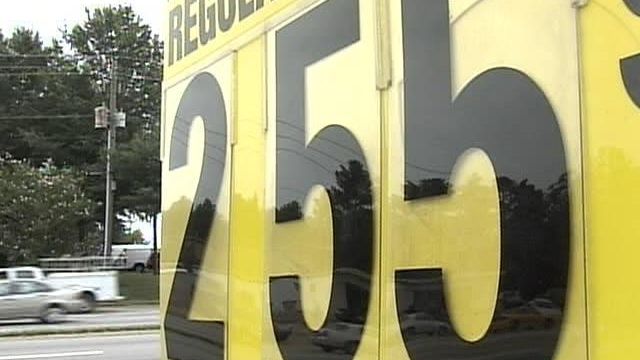Local News
Economist: $2.50/Gallon for Gas Probably as Low as It'll Get
The national average for regular gas was $2.75 a gallon Thursday. In the Triangle, it was $2.67, down 12 cents from last year. In the mountains, drivers paid about $2.70, while drivers in Wilmington paid $2.67.
Posted — UpdatedYour browser doesn't support HTML5 video.
RALEIGH, N.C. — Cheaper gas could translate into crowded roads this holiday weekend.
AAA predicts more than 34 million people will travel 50 miles or more from home. The majority, 29 million, will be driving.
The national average for regular gas was $2.75 a gallon Thursday. In the Triangle, it was $2.67, down 12 cents from last year. In the mountains, drivers paid about $2.70, while drivers in Wilmington paid $2.67.
In September 2005, the national average peaked around $3.13 after Hurricane Katrina. Many drivers blamed the storms for the sharp spike.
No matter who or what was to blame for the wild swings in gas prices, it's the regular guy who feels the pain at the pump.
“If this gas would come down, I’d be a lot happier. But it keeps fluctuating up and down,” said Charles Beasley. “It don’t never stay the same.”
One economist said don’t blame Katrina.
“If you want a single answer for why gas prices are much higher now than they were 10 years ago, it’s really world economic growth,” said N.C. State economist Mike Walden.
As we continue to use the same amount of oil here in the U.S., worldwide demand has skyrocketed, especially in China and India, Walden said. Statistics show prices were already increasing before Katrina, and we're continuing to feel the impact.
Despite the price uncertainty, drivers said they are hopeful.
“I wish it would at least come down to maybe one-something,” said Maggie Jones. “That would be more comfortable, especially for us old people.”
“I think the average person should probably think, you know, $2.50 a gallon is probably as low as it's going to get in the near future. It'll probably go higher,” Walden said.
With all the talk of who sets the price and where they set it, one gas station manager said his method is pretty simple. He simply looks across the street and sets his price one cent lower than his competitor.
Economists say U.S. gas consumption increased more than two percent a year during the 1990s. So far this decade, consumption is up one percent.
Over the years, several factors have contributed to price jumps at the pumps. Most spikes occur at the start of a war, and then prices retreat.
The biggest spike occurred in September 2005 at about the time Hurricane Katrina struck the Gulf Coast. Prices have not dropped below $2 a gallon since.
• Credits
Copyright 2024 by Capitol Broadcasting Company. All rights reserved. This material may not be published, broadcast, rewritten or redistributed.
